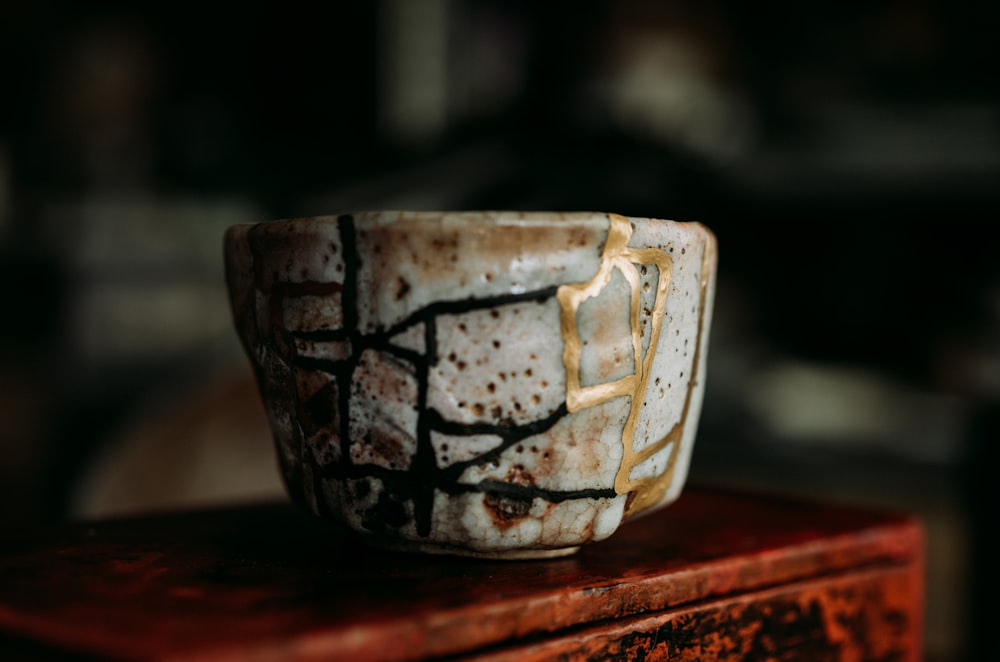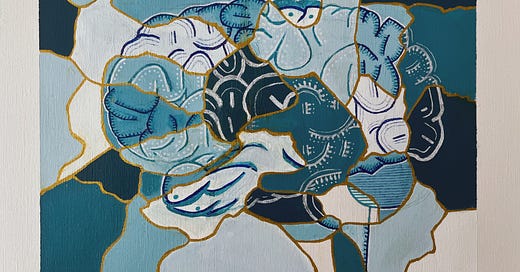#47: Marks of Humanity
We’re patchwork quilts, and our bodies are always trying to keep us together.
“All things are created and destined to be broken someday. I think being broken or damaged is never a bad thing.” - Hiroki Kiyokawa
The sizes vary and their shapes are infinite - endless combinations of stripes and swirls of collagen and fibrous tissue mending us back together, time and again.1
Our bodies quickly respond when the wounds are deeper than superficial scrapes and cuts, but the effect creates collagen that is “thicker and less flexible than the rest of your skin.”2
In other words, a scar, which we usually then try to ignore, if not actively camouflage.
The opposite is seen in the practice of kintsukuroi, or kintsugi3, where broken objects are repaired with lacquer mixed with precious metal. Rather than hide their flaws, it celebrates them as unique works of art.

Artisans in the craft may glue the original pieces (the “crack” method), use new pottery pieces (the “joint-call” method) to fill the gaps, or use the lacquer to fill in the blank spaces (the “piece” method).4 Regardless of the approach used, the practice of kintsugi chooses to highlight the history of an object’s fissures by celebrating its continued, and even improved, strength despite being broken for a time.
And isn’t that what our scars are, or should be - markers to proudly display that we survived something, despite life’s best efforts?

As part of her installation, Mes cicatrices, Je suis entièrment tissé" (My scars, of them I am fully woven), Hélène Gugenheim invited people into her studio to have their scars temporarily painted with gold leaf.567 The resulting photograph and video collection is a beautiful piece of participatory art; a visually striking way to communicate deep wounds and the deeper stories that run underneath them.

The work shared this week is, no doubt, more on the “art” end of the #SciArt spectrum. Rather than an artistic way of displaying scientific concepts or data, it’s art made from “items” that have their origin in an underlying, and often unforgiving, process of knitting ourselves together following trauma. But I had to share it, the concept so breathtaking and powerful.
I wonder, too, how else we can apply it. Trauma can endure on a deep emotional level, long after the collagen has completed its’ last stitch. Our scars can also be metaphorical, with no actual breaks but with pain and repair all the same. How do we mend these hidden tissues - the rips in our heart, the tears in our soul, the cracks in our brain?

My research mind then turns on, and I can’t help but think of the potential of Gugenheim’s work and similar - projects that use art as a means of reclaiming space and experience that would otherwise be ignored - especially within a qualitative framework. I would have loved to ask her participants how the experience of celebrating their scars changed them. I can ask you, lovely reader, how it influences you as a non-participant, who instead see these images and may now be emboldened to embrace your wounds for bearing witness to your strength and survival.
For me, I can imagine how it might look, the marks on my skin and the healing parts of my mind, all catching light and shining brilliantly, despite it all.
American Academy of Dermatology Association. (n.d.) Scars: Who Gets and Causes.
Richman-Abdou K. (5 Mar 2022). Kintsugi: The Centuries-Old Art of Repairing Broken Pottery with Gold.
Ibid.
Lourie J. (6 Jan 2016). What This Artist Does With Scars is Beautiful.
Gugenheim H. (n.d.) Mes cicatrices Je suis d’elles, entièrement tissée.
Bradberry A. (n.d.) Kintsugi: Tracing Transience.




I love thinking of scars and trauma as something that should be visible rather than hidden! That would do so much for our mental health!
Great piece! Now I need to find the time to do some art ...